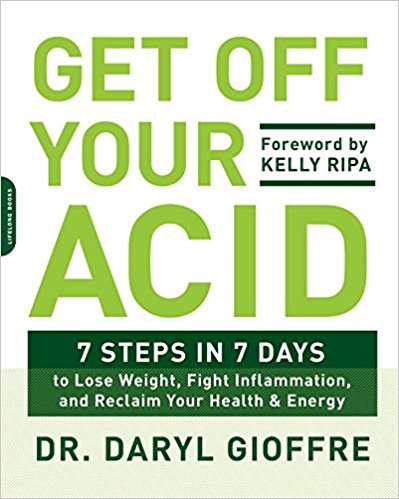 Chicken, it’s what’s for dinner. For decades, chicken has been marketed and sold to us as a healthy alternative to red meat.
Chicken, it’s what’s for dinner. For decades, chicken has been marketed and sold to us as a healthy alternative to red meat.
Did you know that as recently as the 1960s, chicken was primarily something people consumed for Sunday dinners only? It was a relatively rare delicacy for most Americans.
But today, chicken is the most commonly consumed protein in the SAD (standard American diet). Annual consumption of chicken has tripled in the past 5 decades, whereas other meat consumption has held relatively steady.
But is chicken a healthy protein?
I’m here to argue no, it’s not a healthy protein. And increasingly, I’m not alone in this finding.
While chicken might have some advantages over red meat, such as lower saturated fat and cholesterol, it also has some [read: MORE] disadvantages, and we’re going to talk about those in detail.
I would argue that this is a distinction without a difference.
Neither animal protein is a nutritious choice, so we’ll also discuss some alternatives and what you can do to minimize the inflammatory damage chicken might be causing you.
The Inflammatory Fat That’s Highest in Chicken
There’s a long-chain Omega-6 polyunsaturated fatty acid called Arachidonic acid, or ARA for short. Like other Omega-6 fats, ARA is a pro-inflammatory acid found in:
- Poultry
- Eggs
- Red meat
- Vegetable oils
- Fish
Like all fatty acids, we need some in our diet.
Our bodies can’t produce them on our own, and food or supplements need to supply them for processes such as healthy brain function.
However, our modern diets have led to a huge increase in Omega-6 because of the increase in processed grain consumption, meat eating, and vegetable oil use.
By the way, even if you don’t cook with vegetable oil, you’re consuming it through any non-grass-fed animal protein, lots of processed foods, canola oil, as well as soybean oil, safflower oil, and sunflower oil.
This is why research shows the average American has 19 times more pro-inflammatory Omega-6 fats than anti-inflammatory Omega-3 fats in their system at any given time.
In many cases, this ratio is 25:1, and I have even seen 50:1! Most recently, I even saw 88:1!
The ideal ratio for health and weight loss should be 1:1, and no more than 4:1.
So is it any wonder that we have a serious problem on our hands with heart disease, obesity, cancer, and other inflammatory diseases?
In fact, a study of patients in insane asylums found the average Omega-6:Omega-3 ratio to be 70:1!
Since the brain is 60% fat, the Omega-6 fats have inflamed the brain so much, they have contributed to mental illness. If you have more Omega-6 fats than you do Omega-3, they literally take your brain out!
Can you see how this balance is so important?
Not enough Omega-6 and your brain can’t function properly. But too much Omega-6, or not enough Omega-3 to balance it out, and your brain also can’t function properly.
Omega-6 inflammatory fats and Omega-3 anti-inflammatory fats MUST be balanced in order for you to be healthy.
The Omega-6 to Omega-3 ratio is the MOST important ratio in your body, and you need to know what yours is…yet how many doctors have tested this for you?
Mine is 2:1, and my wife Chelsea’s (the alkaline superstar that she is) is the ONLY 1:1 ratio I have ever seen! And she is a vegetarian…a healthy one albeit.
She is a health vegetarian because her diet comprises healthy greens and healthy fats, and she is conscious enough to take Fish Oil, the biggest mistake I see vegetarians make.
So if you want to get your ratio tested, we have made it easy and cost-effective to do so! Email Alkamind customer support at support@getoffyouracid.com and in subject, write Omega-3 Acid Index Test and we will send you an at-home kit to get yours tested!
It takes less than 5 minutes to take a painless sample (droplet of blood with lancet that is included), and then send to our lab in the stamped envelope that is included, and in 12 days, you will know:
- Omega Index – how deficient you are in Omega-3s
- Cell Inflammation Balance – your Omega-6 to Omega-3 ratio
- Palmitic Acid Index – how toxic your cells are from sugar
- Cognitive Function – brain memory capacity, processing speed, sustained attention
Email within 1 week of this blog posting, and you will qualify for a 20% discount (After 7 days, back to our regular price of $249, no exceptions).
Chicken is one of the big culprits behind the disastrous 19:1 average ratio we commonly have today, because chicken is so high in ARA Omega-6 fatty acids.
Here’s the breakdown of each of the foods containing ARA:
- Chicken: .154 grams per serving
- Eggs: .074 grams per serving
- Beef: .042 grams per serving
- Fish: .002 grams per serving
Those might seem like small amounts, and for fish, that’s correct, particularly because of the abundance of Omega-3 fatty acids in fish.
But without balance, a little can go along way.
As you can see, chicken is more than 3 times worse than beef for this pro-inflammatory fat!
Eggs are also a big source of ARA, but if you’re going to eat eggs, you can mitigate the damage.
Eat both the white and yolk of the egg, because the yellow yolk contains all of the DHA, which is Omega-3 and anti-inflammatory. (Yes, that’s right, all of the frenzy over eating egg whites only makes people sicker!)
Winner, Winner, No Chicken Dinner?
I’m not going to tell you that you can’t ever eat chicken. You know that only leads to deprivation of foods you enjoy. That’s not sustainable.
 I’m advocating that we go back to the times of the Sunday chicken dinner, when chicken was a rarely-eaten protein (or better yet, none at all and stick with healthier plant-based options or wild-caught fish like I talk about below).
I’m advocating that we go back to the times of the Sunday chicken dinner, when chicken was a rarely-eaten protein (or better yet, none at all and stick with healthier plant-based options or wild-caught fish like I talk about below).
And in between, we focus on eating alkaline, plant-based proteins like almonds and other nuts, salmon and other fatty low-mercury fish, and chia, and flaxseeds.
And if and when you do eat chicken, it’s all about the source. Organic, free-range chicken is fed less of the grains that are high in unhealthy fats, and as a result, the chicken on your plate has 50% more Omega-3 DHA fatty acids than conventional, grain fed (and 40% LESS Arachidonic Acid).
When you’re eating less, you can spend more to get the organic, free-range birds that are so much better for you than unhealthy conventional poultry.
The Most Important Thing You Can Do to Prevent Inflammation
Whether you eat chicken or not, it’s vitally important that you do what you can to get your ratio – the ratio of Omega-6: Omega-3 – in balance.
Excessive intake of Omega-6 and inadequate intake of Omega-3 fats predisposes us to an exaggerated inflammatory response, which is at the core of every health condition from fatigue, bad skin, and poor digestion, all the way to chronic disease.
On the other hand, getting plenty of Omega-3 fatty acids will benefit you in so many ways:
- Improved heart health and reduced risk of heart disease

- Improved mental health and brain function, especially as we age
- Fewer headaches, and reduction in migraines in particular
- Prevention of autoimmune diseases
- Lower risk of breast and colorectal cancers
- Bone and joint health and decreased risk of arthritis
- Eye health and prevention of macular degeneration
- Glowing skin with fewer signs of aging
- Easier weight loss
It is critical that the average adult take a full 3,000 mg of Omega-3 fish oil every single day. That’s far more than you’re likely getting from a standard fish oil supplement.
It will help you balance your Omega-6:Omega-3 ratio, regulate healthy cholesterol, and keep inflammation levels at bay in your brain and your body.
Our Alkamind Daily Omega-3 is the world’s best fish oil.
What’s our secret to being the best?
We formulated our fish oil to provide the ideal 2:1 ratio of EPA to DHA in a highly-concentrated, purified form.
That means you can take less, but get more. I can take 1/3 the number of softgels I need with other brands!
Here’s what the first reviewers have said about Alkamind Daily Omega-3:
 “Fish oil was recommended to me by my Dr. because I was suffering from mild arthritis and inflammation in my legs. I reluctantly started taking it but hated the fishy after-taste.
“Fish oil was recommended to me by my Dr. because I was suffering from mild arthritis and inflammation in my legs. I reluctantly started taking it but hated the fishy after-taste.
“I was so excited when Dr. Gioffre started offering fish oil, because I knew it would be much better than what was out there…and it is!
“Not only is there NO fishy after-taste, but I only have to take 3 tablets per day, which I easily do with each meal. I’ve only been taking the supplement for a few days but I’m already much happier with it than any other Omega-3 that I’ve taken in the past.” –Christine M.
“Less is more is key for me as a mother of a toddler now pregnant. It is not easy to take the recommended fish oils, so only taking 3 with superior quality is what I want during my pregnancy, nursing and as a mom. No aftertaste as well.” -Marie
Can you say all of that about your current Omega supplement?
 Skip to content
Skip to content






